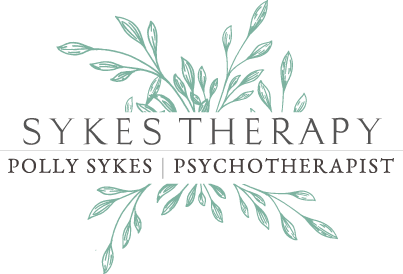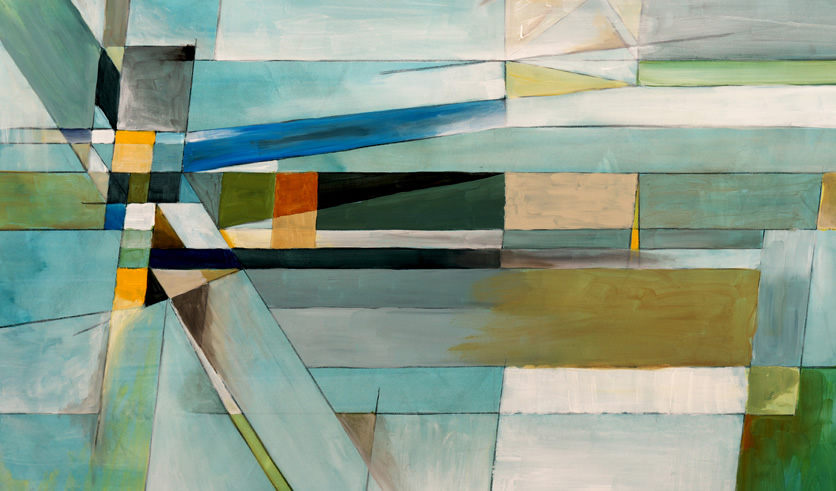This article originally appeared in PPsychological Magazine, Special Edition Winter/Spring 2016, Volume 40, #1.
I was in my early twenties when I decided to become an Art Therapist. It all began on a stereotypically rainy Vancouver morning when I walked into the Vancouver Art Therapy Institute (VATI) on day one of the two-year graduate diploma program. I was excited and slightly afraid of what was to come. It would be an experience that would change me on a personal level, and profoundly influence me as a professional.
A significant component of the training program was weekly group Art Therapy sessions with my fellow students. Ten of us made art together in a large studio, on Monday mornings for three hours. We worked on our art for the first half of the session and then sat together with our instructor/Art Therapist and processed the pieces we had created. I was amazed and deeply impacted by what emerged in that room. With the therapist as a guide, I could look at the pieces I had created and see some essential part of myself. Paint and clay expressing something that was happening inside me, something that I had been almost entirely unaware of until then.
At that point in my life I was quite disconnected from my inner emotional world. I knew that at times I felt off or unbalanced in some way. I knew I wasn’t very nice to myself sometimes, and I knew I struggled to stand up for myself and ask for what I wanted and needed in the world. Art pulled all that out of me, and held it up for me to see. Instead of an unknown, unpleasant feeling, I saw pain and sadness. As the months went by I also saw fear. In that room figures started to emerge that looked frightened and vulnerable.
While I created art I was entirely present in my emotional experience, which felt alive and tangible. Often I would get into a wrestling match with a harsh critical part of myself. I heard it clearly in that room and I started to stand up to it. I started to see the things I made as expressions from the more tender part of myself. They were sometimes quite sad, some hard to look at, but I started to understand that part of myself, and that it had something to say. I saw the need being expressed in the art and eventually I started creating pieces designed to take care of that need. Strong clay arms wrapping protectively around a small, vulnerable figure. Needs that were unknown and unspoken became expressed and symbolized. These expressions were supported and encouraged by the empathic and validating presence of the therapist in the room.
I started to see the same thing happen in my practicum placement with the Vancouver School Board. A grade one student who came from a chaotic and fragmented home, gravitated to the clay and created a family of delicate birds in our very first Art Therapy session together. Her birds were small and fragile-looking. She would play with them, making them fly around the room, but after a few weeks they began to chip and fall apart. She spontaneously began constructing a very heavy solid clay nest for her birds. Every week she arrived in the art room and asked for her nest, which I kept wrapped up and sprayed carefully with a water bottle to keep moist between sessions. She added more and more clay until the nest was complete, with thick heavy walls. Then she moved the bird family in, making sure they were all together and perfectly safe. With my encouragement and careful attunement to her emerging needs, she had constructed the home she wanted and needed for herself and her family, the home she deserved – a solid, secure safe-haven.
After two years of training at VATI we displayed our art as part of the graduation process. People commented on the nurturing, caring, nesting quality of my art. What had begun as an expression of fear and vulnerability, had culminated in a very concrete expression of a need for safety, security and tenderness. Once I could literally see this, I was able to build a life for myself in which these needs were fulfilled.
In the years after I left VATI Art Therapy faded to the background and did not become a significant component of my clinical work. Job opportunities and logistical struggles made it a challenge. I had a few opportunities to facilitate art-based groups for youth experiencing anxiety and depression, which were fantastic, but other than that my art therapy skills sat on the back-burner and started to become a distant memory.
I went back to school and completed my masters degree in Counselling Psychology at OISE. While there I was versed in many of the predominant psychotherapeutic approaches and learnt how to incorporate them into my clinical work. I enjoyed my work, but continued to miss the powerful experiencial aspect of Art Therapy.
Then, one fall day on the tenth floor of the monolithic OISE building, I discovered Emotion Focused Therapy in a seminar course taught by the extraordinary Dr. Jeanne Watson. I was utterly transfixed as she taught us how to work with clients to access their inner emotional world, how to make it alive and tangible in the session, how to symbolize and differentiate emotion, and how to transform core maladaptive emotions such as shame and fear into healing adaptive emotions like empowered anger and self-compassion, by accessing unmet needs.
This was not talking about feelings, but rather diving into emotion and using it to heal and transform. I realized that this is what had happened to me in the Art Therapy room twenty years earlier as my small, collapsed, vulnerable figures began to transform and assert their need for comfort and caring. This was also what was happening when that little girl built the solid nest for her family of delicate birds– creating the comfort and security she needed. I was incredibly excited to be learning a new way to access, symbolize and transform emotion, without having to use art to do so. I sought more training in EFT and began using it in my psychotherapy sessions.
While my discovery and on-going immersion in EFT has propelled me forward in my clinical work, it has also caused me to circle back to where I started and what was happening in those Art Therapy rooms twenty years ago. I have slowly begun the process of dovetailing Art Therapy and Emotion-Focused Therapy in my private practice.
For the first time in many years I have art supplies in my office. It is quite minimal for now– just the very basics. Sometimes I take the art materials out and quietly draw for a few minutes to focus and settle myself before a session. It is a soothing and grounding experience, and in these moments I often think about how to share the therapeutic nature of this process with my clients.
I quite spontaneously incorporated art with a client who was collapsing into self-criticism as she struggled to access an inner bodily felt-sense while practicing focusing in our session. Focusing is an intervention used in EFT when clients are unsure or disconnected from what they are feeling, and helps them tune inward to access words and images to describe their emotional state.
Art Therapy, like EFT, can seamlessly blend a client-centered Rogerian stance of following and attuning to clients in the moment, with a more directive stance in which the therapist leads clients towards experiential interventions which are suggested based on what is most poignant in the session.
At this moment and with awareness that I had already developed a strong therapeutic bond with this client, I took the directive step of asking her to select a colour that appealed to her before closing her eyes while applying the medium to paper. Like most Art Therapists I believe that there is an intrinsic therapeutic value to this act alone – the act of making art and creating something in the context of a supportive and validating therapeutic relationship. As my client drew an image, her shoulders began to relax and the frown of self-criticism on her face softened.
Her creation was a representation of what was happening inside her, an image that she had struggled to access through focusing alone. With closed eyes she had drawn a tight ball that looked like a web of knotted string. After she had considered this image and commented on its familiarity to her, we continued with focusing and she was able to use the image of the knotted string to access an adaptive need to unwind and relax. She knew that she would have to find a way to gently unwind this knot, because if she were to pull harshly on one of it’s loose ends it would react by binding together more tightly.
In this case the art seemed to perfectly complement the EFT intervention of focusing. Art acted as an alternative route to get to the same place by providing the client with an art medium which naturally facilitates the emergence of symbols and images to describe an internal bodily felt-sense. This is an essential component of focusing.
Today as I sit in my office looking out over downtown Toronto I am amazed by how much I have already learnt and experienced in my work as a therapist and excited by what lies ahead. The art supplies sitting beside me suggest a new range of possibilities as I continue to incorporate Art Therapy into my clinical work.

